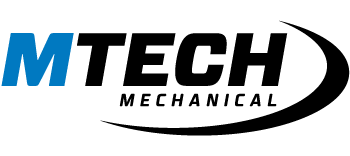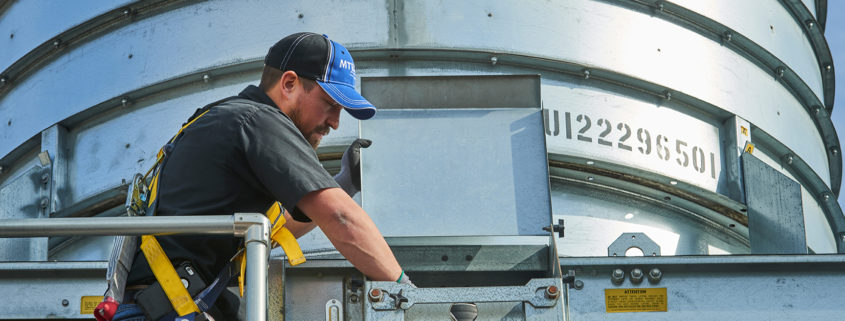Preventative care lowers mechanical costs

A heating, ventilation and air-conditioning technician inspects the pulley on the motor and belt tension for the fan of a cooling tower. Courtesy Vic Moss Photography
Extending building life, keeping costs low and reducing downtime – these are just some of the benefits you will receive when properly maintaining your mechanical systems within your facility. Whether it’s 100 degrees out or 30 degrees below zero, you need your furnace and air-conditioning units to work and be in tip-top shape. The last thing anyone wants is for this equipment to go out when you need it the most.
Every property manager or owner should understand the balance between preventative maintenance and emergency service work. Ideally, preventative care will prolong the system life and lower costs by increasing efficiency and reducing emergency repairs. In general, emergency service calls cost more because of the labor expense after hours as well as last-minute part requests.
While there are some emergency services that are unavoidable, with preventative maintenance plans in place, facility managers and building owners can stay on top of problems before they start and save money in the process.
Owning a commercial space is similar in many ways to owning a home. Just like in a home, you pay a mortgage and taxes and have to perform upkeep. Preventative maintenance, repairs and improvements will keep your property performing at its peak, keeping your investment valuable. It’s important to consider what items should be at the top of your list.
Preventative maintenance plans. How do commercial plumbing and heating, ventilation and air-conditioning preventative maintenance plans work? First, a service technician will come to your facility and inspect the systems and equipment you have installed. This can include: boilers, furnaces, air-conditioning units, evaporative coolers, heating units, water heaters, drinking fountains, water-fed appliances, duct work, pipes, vents and waste lines.
The technician will look for signs of wear, leaks, damage and aging as well as safety issues and overall function.
From there, the technician will create an action plan of what needs to be handled first and what can be handled later as well as recommend the frequency in which each system or equipment should be serviced to create a solid preventative maintenance plan.
What kind of plan can I expect? All plans are different based on your provider. Your plumbing and HVAC preventative maintenance plan likely will include:
- Regular inspections;
- Cleaning of sewer or drain lines;
- Testing of valves;
- Replacing filters;
- Safety checks;
- Pressure checks;
- Lubrication;
- Cleaning; and
- Refrigerant recharging.
How often your technician will perform the preventative maintenance tasks will depend on several factors, including the age of the equipment, how many areas need to be addressed and budget. More than one technician may be required to complete all the tasks, and more than one day or visit may be required.
Starting with a walk through is the best way to really understand what needs to be done, the frequency and the estimate of charges in order to best maintain your equipment for optimal efficiency and longevity and to reduce expensive emergency calls.





